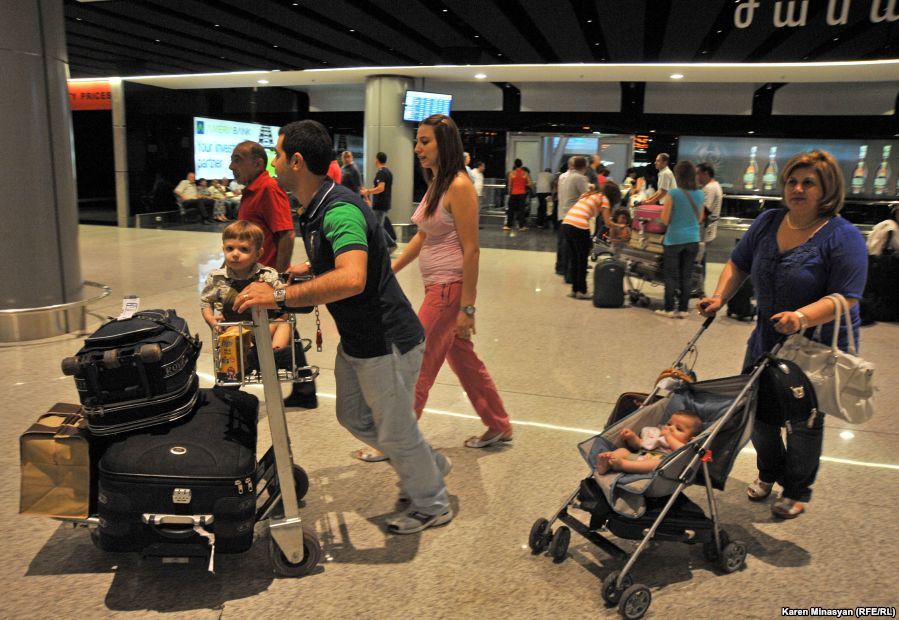As a result of the confrontation in Syria, the country has been left by many citizens, including representatives of the Armenian community. Before the war, from 80 to 100 thousand Armenians lived there, of which about 60 thousand lived in the economic capital of the country - Aleppo, and the rest lived in Damascus, Latakia and Kessab. According to the Ministry of Diaspora, from the beginning of the conflict 20 thousand of Syrian Armenians moved to Armenia from Syria. Today, there are 17 thousand refugees in the country, of which 13 thousand became citizens of Armenia. There are about 20 thousand Armenians remaining in Syria now. Many refuges left for Lebanon, the United States, Canada and other countries due to the conflict. According to the Armenian government, if necessary, the historical homeland is ready to take them all.
Most of the refugees which arrived in Armenia prefer to live in Yerevan, a small number of them settled in other cities and regions of the country. According to the Armenian public sources, about 30 families live in Nagorno-Karabakh, the majority of them are engaged in agriculture. Armenia is the third country in Europe with the number of Syrian refugees per capita, after Germany and Sweden. Taking Armenia's population into account, the number of accepted refugees is quite big, but Yerevan has not yet received a significant international support for the rehabilitation of the refugees. Nevertheless, the government, together with civil society and international organizations, as well as with the assistance of patrons, including the well-known Russian businessman Ruben Vardanyan, managed to raise funds to mitigate the social situation. Some funds compensate the rent and utilities to the Syrian Armenians, as well as partially compensate tuition fees in universities.

The process of integration of Syrian Armenians in their historic homeland is faster than in other countries. Many legal and administrative procedures, including the procedure to acquire the Armenian citizenship, are greatly facilitated. There are no problems with the society. In general, the refugee flow had a positive impact on Armenia's economy - they brought a new business culture, revived economic life to some extent, given their small outdoor cafes and shops, the majority of which serves oriental cuisine.
Despite a number of positive aspects, including the provision of subsidized loans by the government to develop small and medium-sized businesses, the economic integration of refugees has been very hard. This, in particular, according to the report "Economic integration of the displaced Syrian population", prepared by the international organization Save the children.

Syrian Armenians arrived in Armenia fall into the same unfavorable socio-economic conditions as nationals of the country. The Armenian economy, which has never recovered after the global crisis of 2008, faced a difficult situation in Russia, but most of the problems are internal. This is a high degree of economy's monopolization, which stifles the development of small and medium-sized businesses, promotes the growth of unemployment and migration out of the country. This is pervasive corruption, about the fight against which loud statements, unsupported by any concrete steps, have been made for many years. This is a tax terror and favoritism in a business, where corrupt officials and their families continue to play the leading role. This whole "bouquet" of problems contributed to pushing of 300 thousand citizens away from the country in recent years. It is hard to imagine that the Syrian Armenians will be able to avoid these problems. At some point they will begin to deal with these problems, which may prevent refugees from settling in their historical homeland.






